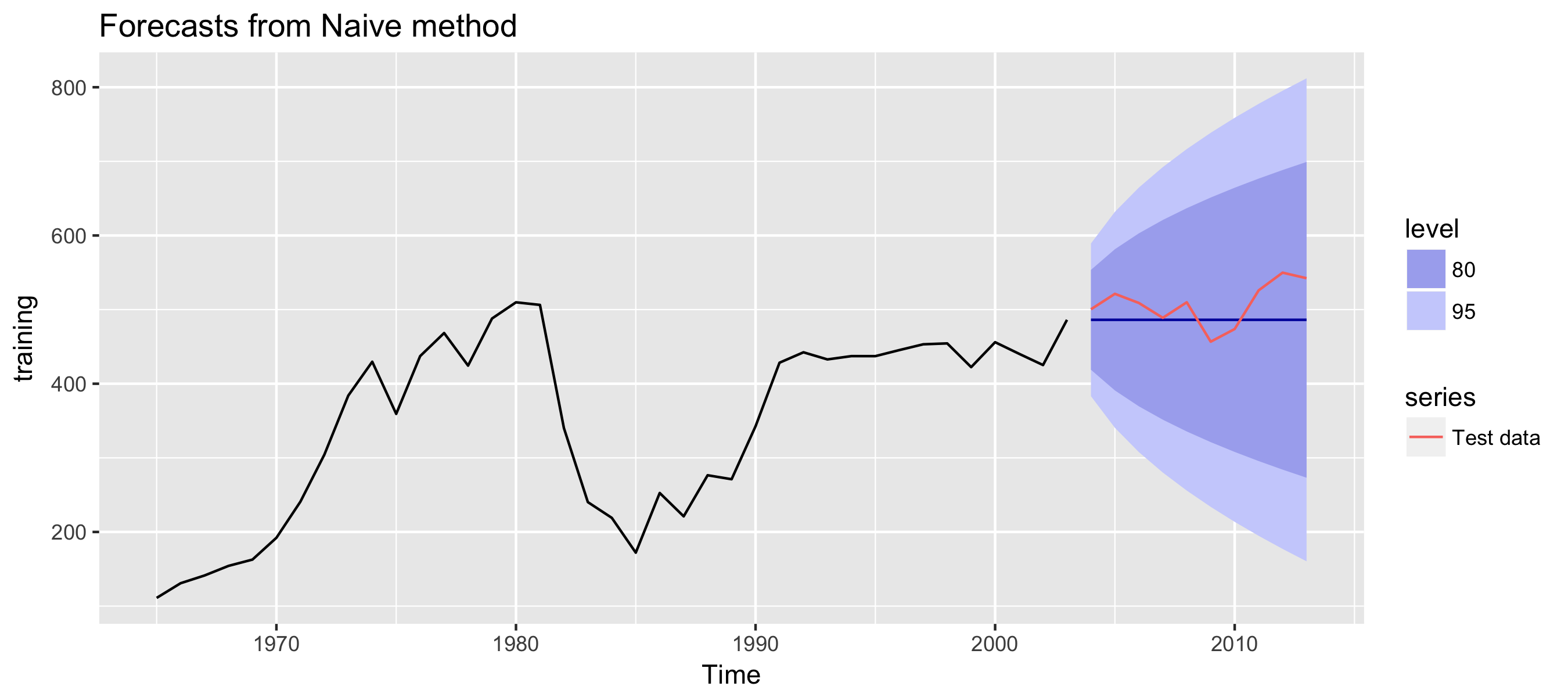Training and test sets
Forecasting in R

Rob J. Hyndman
Professor of Statistics at Monash University
Training and test sets

Training and test sets

Training and test sets

- The test set must not be used for any aspect of calculating forecasts
- Build forecasts using training set
- A model which fits the training data well will not necessarily forecast well
Example: Saudi Arabian oil production
training <- window(oil, end = 2003)
test <- window(oil, start = 2004)
fc <- naive(training, h = 10)
autoplot(fc) + autolayer(test, series = "Test data")

Forecast errors
Forecast "error" = the difference between observed value and its forecast in the test set.
$\neq$ residuals
- which are errors on the training set (vs. test set)
- which are based on one-step forecasts (vs. multi-step)
Compute accuracy using forecast errors on test data
Measures of forecast accuracy
- Observation: $y_t$
- Forecast: $\hat{y}_t$
- Forecast error: $e_t = y_t - \hat{y}_t$
| Accuracy measure | Calculation |
|---|---|
| Mean absolute error | $\text{MAE} = avg(\mid e_t \mid)$ |
| Mean squared error | $\text{MSE} = avg(e_t^2)$ |
| Mean absolute percentage error | $\text{MAPE} = 100 \times avg(\mid \frac{e_t}{y_t} \mid )$ |
| Mean absolute scaled error | $\text{MASE} = \frac{\text{MAE}}{Q}$ where $Q$ is a scaling constant |
The accuracy() command
accuracy(fc, test)
ME RMSE MAE MPE MAPE MASE ACF1 Theil's U
Training set 9.874 52.56 39.43 2.507 12.571 1.0000 0.1802 NA
Test set 21.602 35.10 29.98 3.964 5.778 0.7603 0.4030 1.185
Let's practice!
Forecasting in R

